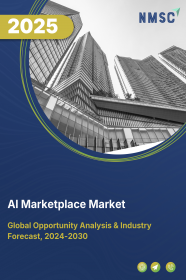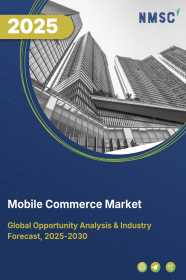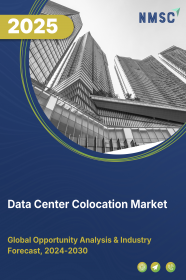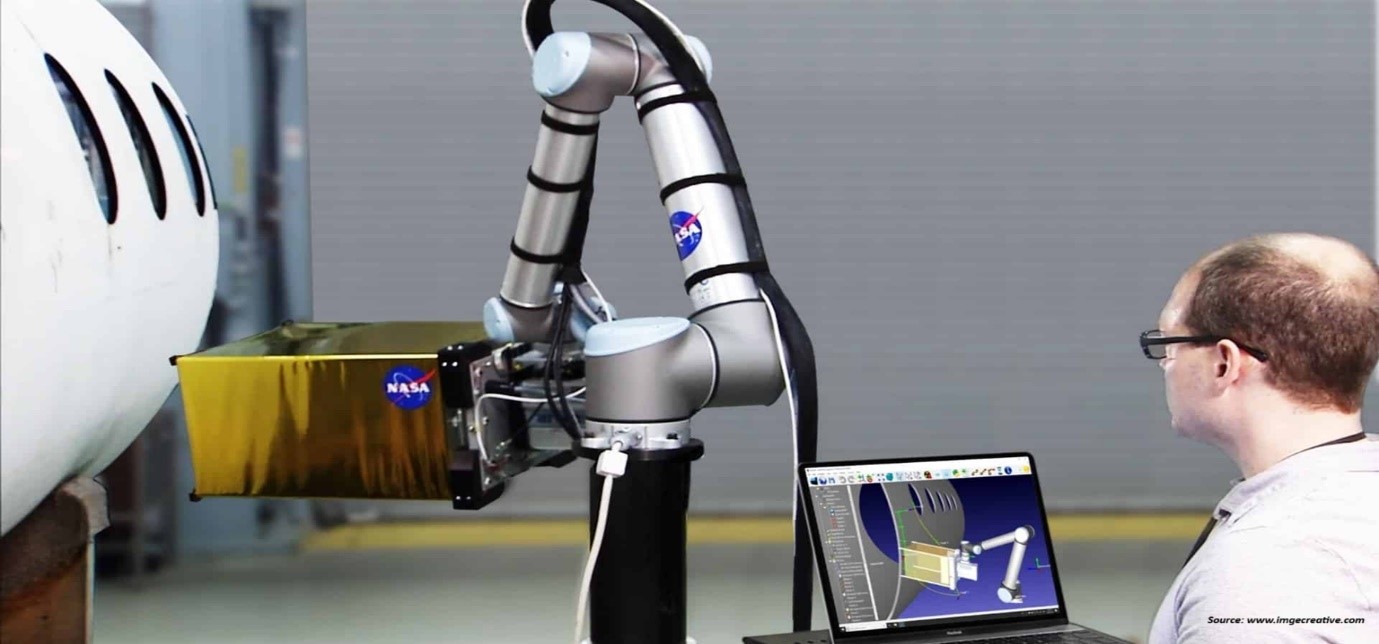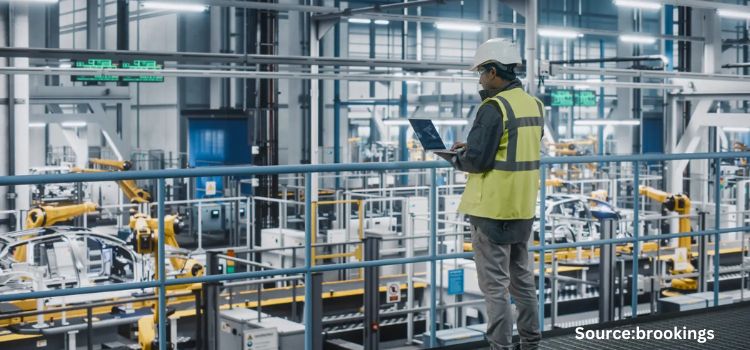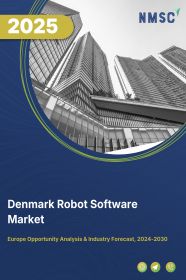
Denmark Robot Software Market by Software Type (Recognition Software, Simulation Software, Predictive Maintenance Software, Communication Management Software, and Data Management and Analysis Software), by Robot Type (Service Robots and Industrial Robots), by Deployment Mode (On-premise and On-demand), by Organization Size (Large Enterprises and Small and Medium-sized Enterprises (SMEs) – Opportunity Analysis and Industry Forecast, 2024–2030
Industry: ICT & Media | Publish Date: 14-Feb-2025 | No of Pages: 126 | No. of Tables: 92 | No. of Figures: 57 | Format: PDF | Report Code : IC2393
US Tariff Impact on Denmark Robot Software Market
Trump Tariffs Are Reshaping Global Business
Denmark Robot Software Market Overview
The Denmark Robot Software Market size was valued at USD 95.7 million in 2023, and is expected to reach USD 510.9 million by 2030, with a CAGR of 25.9% from 2024 to 2030. Robot software consists of a suite of programs and algorithms designed to supervise and manage the operations of robots or robotic systems in various industries such as logistics, manufacturing, entertainment, healthcare, and more. Its functionality encompasses several crucial components. Firstly, it coordinates and manages the movements and behaviors of robots, ensuring precise and efficient task execution by issuing detailed commands to robotic components such as motors and actuators.
Additionally, robot software plays a critical role in interpreting data from various sensors embedded within robots, including cameras, Light Detection and Ranging (LIDAR) sensors, and tactile sensors. This data interpretation provides essential environmental feedback that enables robots to accurately perceive and understand their surroundings. An integral aspect of robot software is its ability to make intelligent decisions using artificial intelligence (AI) and machine learning (ML) algorithms. Through the analysis of data from sensors, adherence to predefined rules, or learning from past experiences, robots can adapt to changing conditions, allowing them to operate autonomously and adjust their actions in real-time. Furthermore, robot software facilitates communication and networking among robots, enabling collaboration for complex tasks or data exchange with a central control system. This interconnectedness facilitates synchronized operations in industrial environments, leading to enhanced efficiency and productivity.
Increasing Adoption of Industrial Robots Propels the Growth of the Denmark Robot Software Market Trends
The increasing adoption of industrial robots emerges as a pivotal factor driving the expansion of the Denmark robot software market. As automation becomes increasingly integrated across a variety of sectors, there is a corresponding surge in demand for efficient robot software solutions. Industrial robots find application in a wide array of tasks, including manufacturing, assembly, logistics, and warehousing.
To fully harness the potential of these robots and seamlessly incorporate them into existing workflows, sophisticated software solutions are indispensable. These software platforms facilitate programming, control, optimization, and coordination of robotic systems, leading to improved performance and productivity. Consequently, the rising adoption of industrial robots fuels the requirement for advanced robot software, thus propelling growth in the robot software market.
Rising Labor Costs and Workforce Challenges Drive the Denmark Robot Software Market Growth
The escalating labor costs and persistent workforce challenges serve as significant drivers fueling the expansion of the Denmark robot software market demand. With labor expenses on the rise, especially within industries heavily reliant on labor-intensive tasks, organizations are actively seeking solutions to mitigate costs while maintaining productivity. This growing trend stimulates widespread adoption of automation technologies, including robots, to streamline operations and reduce dependence on human labor. At the heart of this transition lies the critical role played by robot software, enabling efficient programming, control, and optimization of robotic systems.
Additionally, workforce challenges such as skill shortages and demographic shifts further incentivize businesses to invest in robot software solutions, ensuring operational continuity and competitiveness. Consequently, the robot software market experiences sustained growth as organizations increasingly turn to automation to address labor-related challenges and enhance operational efficiency.
High Initial Investment for Acquiring Robot Hardware Restrain the Growth of the Denmark Robot Software Market
The considerable upfront investment necessary for acquiring robot hardware acts as a significant barrier to Denmark robot software market growth. Procuring robot hardware involves substantial initial costs, encompassing the purchase of robotic systems, peripherals, and associated equipment. These expenses can be prohibitive for many organizations, particularly small and medium-sized enterprises (SMEs) or those with constrained budgets. The substantial financial commitment required for robot hardware might deter potential adopters from investing in robot software solutions, despite acknowledging their potential long-term benefits.
Additionally, the high initial investment may extend the return on investment (ROI) period, resulting in longer payback periods and limiting the scalability of robot deployments. Hence, addressing the challenge of high initial investment costs for robot hardware is crucial to facilitating broader adoption and driving the Denmark robot software market growth.
The Expansion of Robotics-as-a-Service Creates New Opportunities in the Denmark Robot Software Market
The expansion of Robotics-as-a-Service (RaaS) presents new opportunities in the market by providing a more accessible and cost-effective pathway for organizations to implement robotics solutions in the country. RaaS models enable businesses to access robotic hardware, software, and related services through subscription plans, eliminating the need for significant upfront investments in capital-intensive assets. This approach reduces entry barriers, particularly for small and medium-sized enterprises (SMEs) or organizations with limited budgets, enabling them to leverage robotics technology without the financial constraints of ownership.
Moreover, RaaS models often include maintenance, support, and software updates within the subscription, offering added value and simplifying the deployment process. By democratizing access to robotics technology and promoting a pay-as-you-go model, the expansion of RaaS creates new market opportunities, driving adoption across diverse industries and catalyzing innovation in robot software solutions.
Competitive Landscape
Several key players operating in the Denmark robot software industry include IBM, NVIDIA, ABB Ltd., FANUC, Teradyne, Inc., H2O.ai, Brain Corp, CloudMinds, Clearpath Robotics, and Neurala, Inc. These market players are adopting strategies to maintain their dominance in the market.
Denmark Robot Software Market Key Segments
By Software Type
-
Recognition Software
-
Simulation Software
-
Predictive Maintenance Software
-
Communication Management Software
-
Data Management and Analysis Software
By Robot Type
-
Service Robots
-
Ground
-
Aerial
-
Underwater
-
-
Industrial Robots
-
Traditional Industrial Robots
-
Articulated Robots
-
SCARA Robots
-
Parallel Robots
-
Cartesian Robots
-
Other Robots
-
-
Collaborative Industrial Robots
-
By Deployment Mode
-
On-premise
-
On-demand
By Organization Size
-
Large Enterprises
-
Small and Medium-sized Enterprises (SMEs)
By Industry Vertical
-
Banking, Financial Services, and Insurance (BFSI)
-
Automotive
-
Retail and eCommerce
-
Aerospace & Defense
-
Healthcare and Life Sciences
-
Transportation and Logistics
-
Manufacturing
-
Telecommunications and IT
-
Academia and Research
-
Media & Entertainment
-
Others
REPORT SCOPE AND SEGMENTATION:
|
Parameters |
Details |
|
Market Size in 2023 |
USD 95.7 Million |
|
Revenue Forecast in 2030 |
USD 510.9 Million |
|
Growth Rate |
CAGR of 25.9% from 2024 to 2030 |
|
Analysis Period |
2023–2030 |
|
Base Year Considered |
2023 |
|
Forecast Period |
2024–2030 |
|
Market Size Estimation |
Million (USD) |
|
Growth Factors |
|
|
Companies Profiled |
10 |
|
Market Share |
Available for 10 companies |
|
Customization Scope |
Free customization (equivalent up to 80 working hours of analysts) after purchase. Addition or alteration to country, regional, and segment scope. |
|
Pricing and Purchase Options |
Avail customized purchase options to meet your exact research needs. |
KEY PLAYERS
-
IBM
-
NVIDIA
-
ABB Ltd.
-
FANUC
-
Teradyne, Inc.
-
H2O.ai
-
Brain Corp
-
CloudMinds
-
Clearpath Robotics
-
Neurala, Inc

















 Speak to Our Analyst
Speak to Our Analyst



